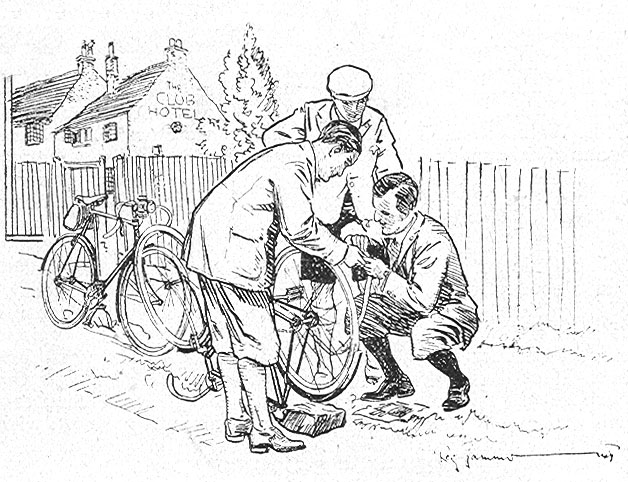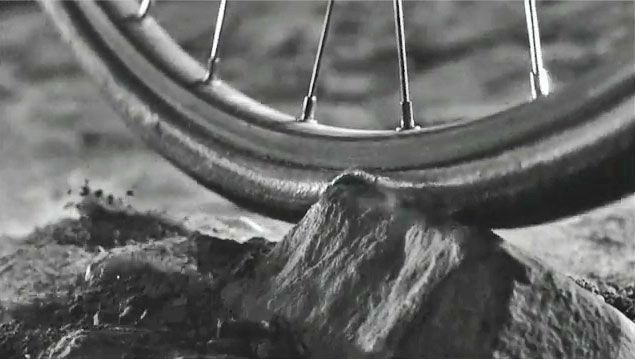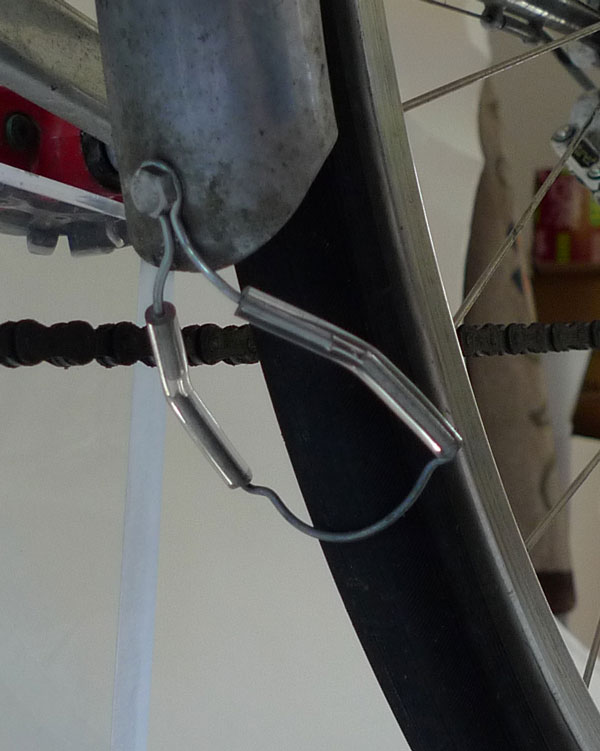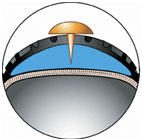Preventing Flat Tires

Every cyclist knows the sensation: You ride along, feeling at one with your bike and the world. Suddenly you notice your tire going soft, often accompanied by a hissing sound. Like Icarus, who flew too high and got singed by the sun, your euphoria is dashed as you come to a wobbling halt on the side of the road.
Unlike Icarus, who perished as he lost his feathers, flat tires are merely inconvenient. In the video below, Mark shows how to change a tire in less than 90 seconds.
[youtube http://www.youtube.com/watch?v=6bWNOLuEBag?rel=0&w=425&h=349]
Even though you need some additional time to find the debris that caused the flat in the first place, a flat tire needn’t keep you off the bike for long. Nonetheless, we all would like to avoid flat tires as much as possible.
There are two main causes for flat tires. The first are pinch-flats, when your tire deflects so much upon hitting an obstacle that the tube gets pinched between obstacle and rim. The tube punctures, and sometimes your rim dents as well. (The photo below is from Paris-Roubaix, where racers use tubular tires, which are less likely to pinch-flat.)

If you suffer from pinch flats, raise the pressure of your tires. If your pressure already is at the recommended value, then your tires are too narrow for your weight and the road surface. With wide tires, pinch flats no longer are a cause for concern.
The second, more common, cause for flat tires is a puncture. Sharp objects work their way through the tire tread until they puncture the tube inside. There are three ways to reduce the incidence of punctures:
- Avoidance: Don’t ride over debris that will puncture your tires.
- Removal: Remove debris before it can get lodged in your tires.
- Barrier: Introduce barriers that prevent debris from puncturing your tires.
Avoidance is why some riders have far fewer flats than others, even on the same roads and with the same tires. Debris accumulates especially on the sides of major highways. In the main traffic lanes, cars displace the debris until it ends up in the places where cars rarely tread – usually the side of the road or the shoulder, but also some spots at intersections.
If you ride in the traffic lane, you automatically avoid most debris. On busy highways, this is not an option, but at night or on lightly trafficked roads, there is no need to ride on the shoulder. On backroads without shoulders, you ride in the traffic lanes anyhow, greatly reducing your risk of flat tires. Check your maps and see whether you can avoid major highways, not only to reduce your risk of flat tires, but also for a more enjoyable ride. If you have to ride on the highway, don’t ride on the shoulder unless there is significant traffic. In the city, don’t hug the curb, where debris accumulates.
No matter where you ride, scan the road ahead. When you see debris, give it a wide berth. Debris to avoid includes:
- Gravel left over from winter snowfalls. Freshly crushed gravel contains sharp rock shards that can puncture most tires. Gravel roads rarely see flats, though, perhaps because the gravel’s sharp edges are worn off as it is moved around when the road is built.
- Glass. Bottle glass is sharper than the glass from broken car windows.
- Exploded truck tires. Their insidious steel wires will work their way through most tires.
- Plants with thorns that overgrow the pavement.
If you see debris up ahead on the shoulder of a highway, check whether traffic is clear, and if it is safe, ride in the main traffic lane for a few hundred feet. Debris tends to spread “downstream” from its source, as it gets moved by vehicles and their slipstream.

Debris removal can prevent many flats. Many racers wipe their tires with their gloves after riding through debris. More effective are “tire wipers” (see photo above), which also work on bikes with fenders. The wires of tire wipers very lightly brush the tire tread. They scrape off debris before it gets hammered into the tire as it rotates. When I raced on tubular tires, I used tire wipers (also called “tire savers”), and had only one flat in 4 years. That flat occurred when the wire of my tire wiper had moved and no longer brushed the tire. I have been thinking of putting tire wipers on my bike, but I have so few flats that it hardly seems worth while.

Barriers can prevent some debris from penetrating your tires. Puncture-resistant belts are effective against glass, because the glass gets pulverized between the belt and the road, rather than hammered into the tube. Sharp flints do not give up so easily, and usually penetrate the “puncture-resistant” belt all the same, just taking a bit longer to puncture the tube. Some tire manufacturers have increased the thickness of their tread so much that many obstacles no longer can get through, but remain stuck inside (see above). Unfortunately, extra belts and thicker tread make tires less supple, greatly reducing their comfort and speed.
Another way of creating a barrier is making the tire rubber itself harder to puncture. Many professional racers “age” their tires before they use them. Lance Armstrong famously had a mechanic with a cellar full of tires. As the natural rubber used in many high-end tires cures more, it is supposed to get more puncture-resistant. Does it really work? It’s hard to say, because flats can be random. However, it appears that when I ride on tires that have been manufactured recently, I get more flats than if I ride tires from a batch made a year or two ago. For Paris-Brest-Paris, I have stashed away a few tires, just in case.
Conclusion
I recommend avoidance as a first line of defense, with tire wipers as a backup in case you have too many flats. Both methods do not detract from the performance and feel of your tires. Aging your tires for a year or two may make them more puncture-resistant, and it doesn’t hurt.
Barriers are a good idea only if you suffer from a very large number of flats, and everything else has failed. Icarus may have soared too high, but without wings, he would had stayed on the ground and not got anywhere, either. To me, riding on puncture-resistant tires is like trying to fly with clipped wings. I prefer to fix a flat every couple of months.
Update (7/1/2013): Compass Bicycles now sells Tire Wipers.


